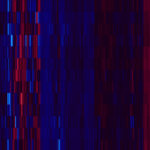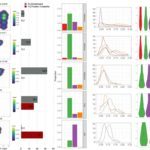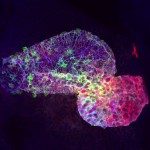Link to Pubmed [PMID] – 32014893
Link to DOI – e00810-1910.1128/IAI.00810-19
Infect Immun 2020 03; 88(4):
Oral administration is a preferred model for studying infection by bacterial enteropathogens such as Yersinia spp. In the mouse model, the most frequent method for oral infection consists of oral gavage with a feeding needle directly introduced in the animal stomach via the esophagus. In this study, we compared needle gavage to bread feeding as an alternative mode of bacterial administration. Using bioluminescence-expressing strains of Yersinia pseudotuberculosis and Yersinia enterocolitica, we detected very early upon needle gavage a bioluminescent signal in the neck area together with a signal in the abdominal region, highlighting the presence of two independent sites of bacterial colonization and multiplication. Bacteria were often detected in the esophagus and trachea, as well as in the lymph nodes draining the salivary glands, suggesting that lesions made during needle introduction into the animal oral cavity lead to rapid bacterial draining to proximal lymph nodes. We then tested an alternative mode of bacterial administration using pieces of bread containing bacteria. Upon bread feeding infection, mice exhibited a stronger bioluminescent signal in the abdominal region than with needle gavage, and no signal was detected in the neck area. Moreover, Y. pseudotuberculosis incorporated in the bread is less susceptible to the acidic environment of the stomach and is therefore more efficient in causing intestinal infections. Based on our observations, bread feeding constitutes a natural and more efficient administration method which does not require specialized skills, is less traumatic for the animal, and results in diseases that more closely mimic foodborne intestinal infection.











